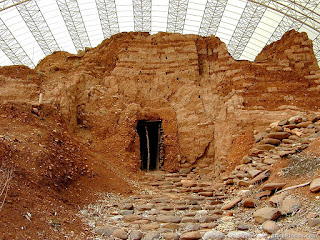It was believed the gods controlled these powerful forces, with humans little more than slaves subject to the whims of fate.
This put religion firmly at the center of daily life, with a temple dedicated to one of the major gods at the heart of each town or city.
Initially these were fairly simple mud-brick constructions, decorated with cone geometrical mosaics and frescos with human and animal figures.
A rectangular shrine, known as a "cella", had a brick altar or offering table in front of a rituals, food sacrifices and libations took place on a daily basis, as well as monthly feasts and annual celebrations of the New Year.
























